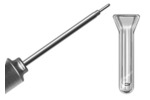- ▶
- Heaters/Source
- ▶
- Agilent Heaters and SensorsMass Spectrometry, Scientific Supplies & ManufacturingScientific Instrument Services 5973 Source Heater Tamper Resistant Allen Wrench 5973/5975 Quad Sensor 5985 Source Heater Assembly Agilent Interface Heater Assembly 5971 Interface Heater

- ▶
- Reference Material on InstrumentationArticle - A High Temperature Direct Probe for a Mass Spectrometer Design of a Direct Exposure Probe and Controller for use ona Hewlett-Packard 5989 Mass Spectrometer SIS AP1000 AutoProbe™ SIS AP2000 AutoProbe™ - Description of System HPP7: Direct Probe Electronics Console HPP7: Direct Probe for the Agilent (HP) 5973/5975 MSD HPP7: HP Direct Probe Application Notes HPP7: Installation Directions for the Direct Probe HPP7: Side Cover for the HP 5973 MSD HPP7: Support HPP7: Probe Inlet System for the Agilent (HP) 5973 and 5975 MSD with Automatic Indexed Stops HPP7: Theory of Operation of the Direct Probe and Probe Inlet System Direct Thermal Extraction Thermal Desorption Application Notes Environmental Thermal Desorption Application Notes Food Science Thermal Desorption Application Notes Forensic Thermal Desorption Application Notes GC Cryo-Trap Application Notes Headspace Application Notes Purge & Trap Thermal Desorption Application Notes Theory of Operation of the AutoDesorb® System AutoDesorb Notes for SIS Dealers Adsorbent Resin Application Notes Installation of the Short Path Thermal Desorption System on Agilent (HP) and Other GCs Installation of the Short Path Thermal Desorption System on a Varian 3400 GC AutoDesorb® System Development Team Thermal Desorption Applications and Reference Materials Installation of the Short Path Thermal Desorption System - TD5 Part I - Design & Operation of the Short Path ThermalDesorption System Installation Instructions for the Model 951 GC Cryo-Trap on the HP 5890 Series GC Installation Instructions for the Model 961 GC Cryo-Trap on the HP 5890 Series GC Operation of the Model 951/961 GC Cryo-Trap SIS GC Cryo Traps - Theory of Operation NIST/EPA/NIH Mass Spectral Enhancements - 1998 version (NIST98) SIMION 3D Ion Optics Class Mass Spectrometer Source Cleaning Methods MS Tip: Mass Spectrometer Source Cleaning Procedures Mass Spec Source Cleaning Procedures Micro-Mesh® Abrasive Sheets Research Papers Using New Era Syringe Pump Systems EI Positive Ion Spectra for Perfluorokerosene (PFK) Cap Liner Information How do I convert between fluid oz and milliliters? Which bottle material should I choose? Which bottle mouth should I choose? The Bottle Selection Guide CGA Connections for Gas Tanks Chemical Reaction Interface Mass Spectrometry (CRIMS)

- Probes
- LiteratureApplication Notes Adsorbent Resins Guide Mass Spec Tips SDS Sheets FAQ MS Calibration Compound Spectra Manuals MS Links/Labs/ Organizations MS Online Tools Flyers on Products/Services Scientific Supplies Catalog About Us NextAdvance Bullet Blender® Homogenizer Protocols Micro-Mesh® Literature Instrumentation Literature Agilent GC/MS Literature SIS News / E-Mail Newsletter NIST MS Database - Update Notifications

- ▶
- HPP7: HP Direct Probe Application NotesNo. 1 - Design of a Direct Exposure Probe and Controller for use on a Hewlett-Packard 5989 Mass Spectrometer No. 2 - A High Temperature Direct Probe for a Mass Spectrometer No. 44 - The Design of a New Direct Probe Inlet for a Mass Spectrometer No. 48 - Demonstration of Sensitivity Levels of Caffeine for a New Direct Probe and Inlet for the HP 5973 MSD No. 49 - Analysis of Cocaine Utilizing a New Direct Insertion Probe on a Hewlett Packard 5973 MSD No. 50 - The Analysis of Multiple Component Drug Samples Using a Direct Probe Interfaced to the HP 5973 MSD
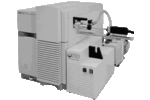
- ▶
- Article - A High Temperature Direct Probe for a Mass Spectrometer (This Page)
Probe Application Note #2
Thermal Desorption System Problem Solving - March 1994
by Christopher Baker and John J. Manura,
Scientific Instrument Services, Inc.,
Presented at PITTCON Meeting, Chicago, IL. MARCH 1994
Introduction
The use of a direct insertion probe is a common method for the introduction of samples into the mass spectrometer. The technique is preferred due to the speed of analysis of solid matrix samples. Direct probe samples can be analyzed in as little as 2 minutes as compared to GC samples which can take from 30 to 60 minutes for the analysis to complete. Solid or liquid samples to be analyzed are normally inserted into small glass capillary tubes which are then inserted into the direct probe tip. Samples analyzed via the direct probe technique are normally restricted to the analysis of pure single component solid samples due to the complexity of the mass spectra if multicomponent samples are analyzed. This limitation of the direct probe technique has been minimized by utilizing the mass spectrometer in the chemical ionization (CI) mode. Mixtures of samples containing 3 to 8 components can be readily analyzed and the components distinguished in the CI mode. Most mass spectrometer direct probes have a temperature limitation of 400 degrees C. This low temperature limits the usefulness of the technique. In many instances it is desirable to analyze samples at much higher temperatures. One may wish to analyze a high molecular weight drug sample which is not volatile at the lower temperatures. In other cases one may wish to cause the thermal decomposition of a compound in order to determine the decomposition products and fragments. A new high temperature direct probe has been designed to permit the analysis of samples at probe temperatures up to 800 degrees C.
Probe Design

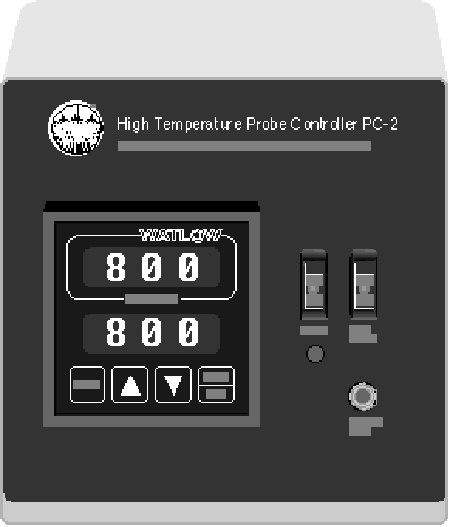
Figure 1 - High Temperature Direct Probe and Controller
Figure 1 shows the high temperature direct probe and programmable temperature controller which was designed and manufactured by Scientific Instrument Services for this study. The probe shown was designed for use on a Hewlett-Packard 5989 MS Engine mass spectrometer. Another model was also designed and manufactured for the Finnigan TSQ mass spectrometer. For both of these instruments no modification of the mass spectrometer or probe inlet and valve assembly is required. The probe handle contains the connector for the interconnecting cable, one gas input line for the introduction of cooling gas and an output or exhaust for the cooling gas. The probe tip temperature is controlled via a separate digital temperature controller. A cable connects the probe to the controller. An additional cable connects the temperature controller to the remote start input on the mass spectrometer to permit the remote starting of the mass spectrometer from the probe temperature controller. The temperature controller permits the programmable temperature ramping at ramp rates from 1 to 200 degrees per minute. A detailed description of the design of the high temperature probe tip is shown in Figure 2. The probe tip has been designed such that the sample vial is placed in direct contact with the heater coil. This permits the maximum heat transfer to the sample to enable the high temperatures achieved with this probe and also permits the fast temperature ramp rate obtainable with this probe. The miniature resistance heater coil is surrounded with ceramic insulation and encased in an Inconel sheath. The thermocouple which monitors the probe tip temperature is located at the bottom of the sample vial well. This not only measures the temperature but also provides the signal to control the temperature of the probe tip. This design permits the probe to be heated up to 800 degrees C. In the ballistic mode the probe will heat up at 700 degrees per minute to the set temperature.
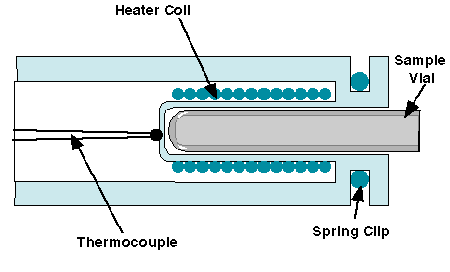
Figure 2 - Enlargement of High Temperature Probe Tip
Experimental
All experiments were conducted on a Hewlett Packard 5989A mass spectrometer. The mass spec was used in the electron impact (EI) mode for this study and was scanned from 50 to 1000 daltons. The source temperature was set to 260 degrees C and the quads to 100 degrees C. The high temperature probe was ramped from 25 degrees C to 800 degrees C at a rate of 200 degrees per minute. The mass spec was started at the beginning of the temperature ramp and data was collected for a minimum of eight minutes for each sample. Two high molecular weight samples were analyzed to determine the feasibility of analyzing these samples at the higher probe temperatures. In addition a sample of the high temperature polyimide Vespel® (TM) was analyzed to determine the usable temperature limits of this material as well as the nature of the thermal decomposition products at high temperature.
Results and Discussion
The total ion profile of a sample of the drug Cephalexin (MW = 347) is shown in Figure 3. This drug sample was volatilized from the direct probe sample vial into the mass spec source at a temperature between 240 and 600 degrees C. The mass spectrum of the sample at the maximum level as indicated in the total ion profile is shown in Figure 4. The major ion in the mass spectrum is the 303 ion. This ion is due to the loss of 44 from the M+ ion which can be explained by the loss of the COOH group from the molecular ion. A small molecular ion (mass 347) was detected. This sample demonstrates the usefulness of this technique to analyze high molecular weight drug samples without sample decomposition at these high direct probe sample temperatures.
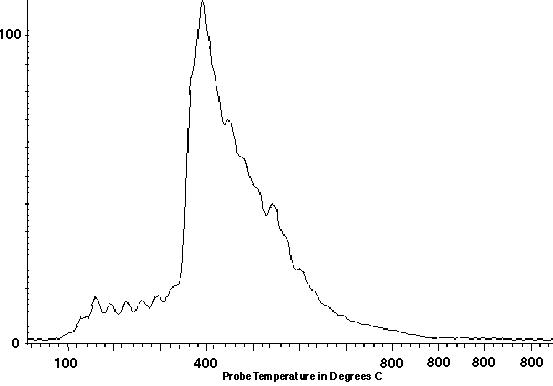
Figure 3 - High Temperature MS Probe Analysis of Cephalexin
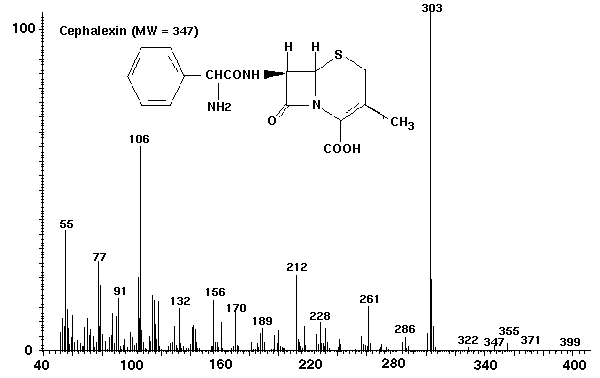
Figure 4 - Mass Spec of Cephalexin at Probe Temperature of 400 degrees C
Figures 5 and 6 show the total ion profile and the mass spectrum for the pesticide Avermectin B1A. This compound has a molecular weight of 872. With the direct probe, none of the compound was volatilized into the mass spec below 400 degrees C. The optimum quantity of this compound was volatilized into the mass spec source at a temperature of 480 degrees C. The major peaks observed in the spectra are characteristic of the reported spectra of this pesticide. Once again this high temperature direct probe proves its usefulness in the analysis of high molecular weight compounds that could not be analyzed via conventional low temperature direct probes.
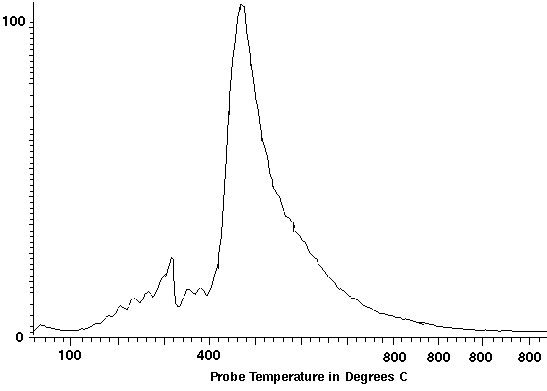
Figure 5 - High Temperature MS Probe Analysis of Avermectin B1A
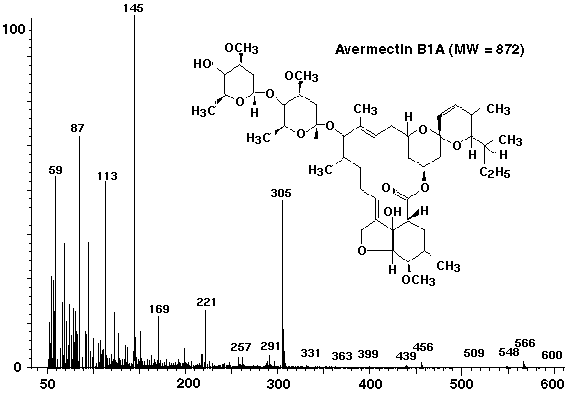
Figure 6 - Mass Spec of Avermectin B1A Sample at Probe Temperature of 480 degrees C
The high temperature polyimide Vespel® is widely used as a manufacturing component in many instruments including mass spectrometers. It is rated for useful temperatures up to 400 degrees C in these instruments with negligible outgassing or material decomposition. As a manufacturer of mass spectrometer parts and accessories we were concerned about the true usable temperature limitations of this polymer and the nature of the thermal emissions or decomposition products at high temperature. A 0.5 milligram (500 ug) sample of finely ground Vespel was analyzed via the high temperature direct probe and the total ion profile is shown in Figure 7. This was raw material as provided by the manufacturer. No preconditioning or baking out of the material was performed prior to analysis. Although some emissions were detectable between 300 and 600 degrees C, the major components eluted or thermally decomposed from the Vespel sample at 740 degrees C. The resulting mass spectrum of the volatile emissions at 740 degrees C is shown in Figure 8. The resulting spectra, is probably a mixture of more than one component due to the apparent complexity of the spectrum. CI techniques could be used to analyze the sample and verify this assumption. The results do indicate the usable temperature range of the Vespel material. Additional studies are needed to verify the identity of the eluted compounds and to determine if the volatiles which were detected at the lower temperatures could be eliminated by preconditioning of the Vespel material before it was analyzed. The above example demonstrates the usefulness of the high temperature probe for the analysis of samples at high temperature to determine their useful temperature range and to determine the thermal decomposition products.
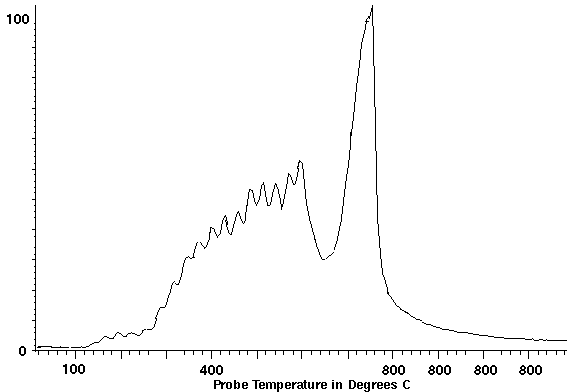
Figure 7 - High Temperature MS Probe Analysis of Vespel
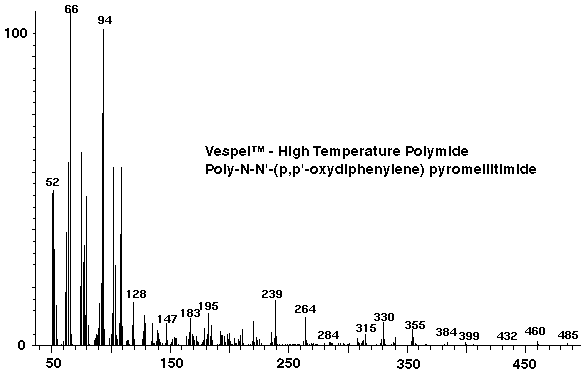
Figure 8 - Mass Spec of Vespel at Probe Temperature of 740 degrees C
Conclusion
A new high temperature direct probe has been designed and manufactured to permit the direct analysis of solid matrix samples at temperatures up to 800 degrees C. This extends the range of compounds that can be analyzed. We have shown the application of this technique for the analysis of high molecular weight compounds which are not volatile below 400 degrees C. Mass spectra are obtainable without sample decomposition. It has also been demonstrated that this probe can be used to effect the thermal decomposition of a solid sample. This was done to determine the useful temperature range of the material as well as study the chemical nature of the decomposition products. The probe has proven useful to analyze a large number of compounds and fill a gap between the standard direct probes and the pyrolysis probes which are used in mass spectrometers.
The use of a direct insertion probe is a common method for the introduction of samples into the mass spectrometer. The technique is preferred due to the speed of analysis of solid matrix samples. Direct probe samples can be analyzed in as little as 2 minutes as compared to GC samples which can take from 30 to 60 minutes for the analysis to complete. Solid or liquid samples to be analyzed are normally inserted into small glass capillary tubes which are then inserted into the direct probe tip. Samples analyzed via the direct probe technique are normally restricted to the analysis of pure single component solid samples due to the complexity of the mass spectra if multicomponent samples are analyzed. This limitation of the direct probe technique has been minimized by utilizing the mass spectrometer in the chemical ionization (CI) mode. Mixtures of samples containing 3 to 8 components can be readily analyzed and the components distinguished in the CI mode. Most mass spectrometer direct probes have a temperature limitation of 400 degrees C. This low temperature limits the usefulness of the technique. In many instances it is desirable to analyze samples at much higher temperatures. One may wish to analyze a high molecular weight drug sample which is not volatile at the lower temperatures. In other cases one may wish to cause the thermal decomposition of a compound in order to determine the decomposition products and fragments. A new high temperature direct probe has been designed to permit the analysis of samples at probe temperatures up to 800 degrees C.


